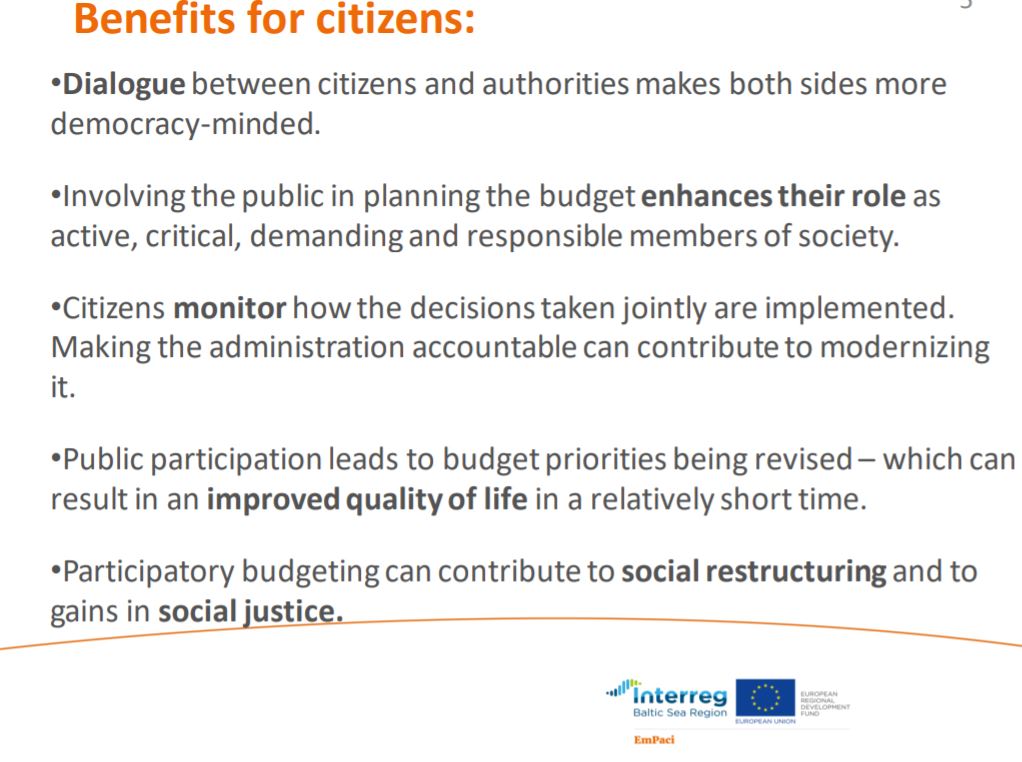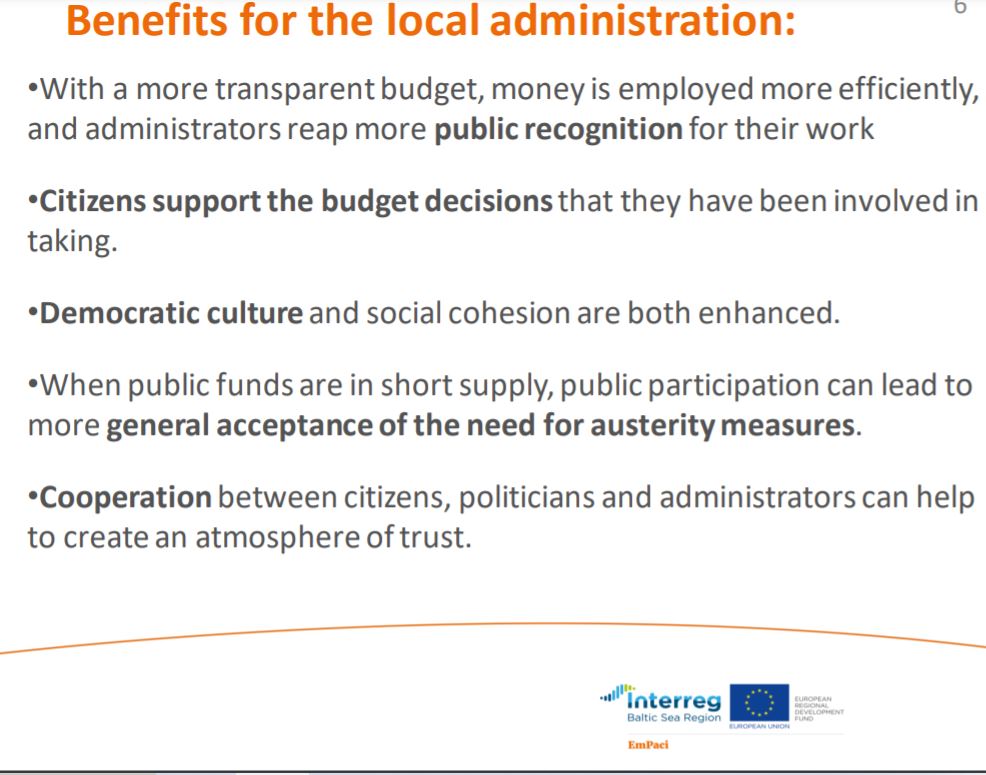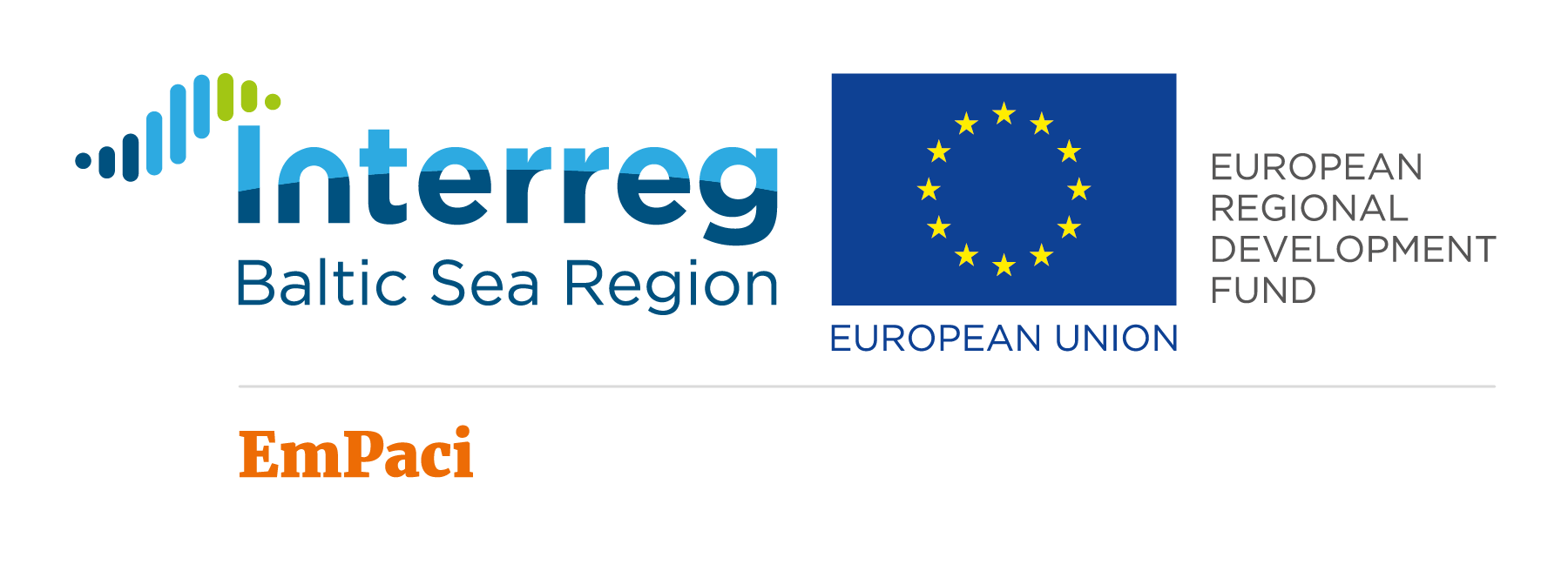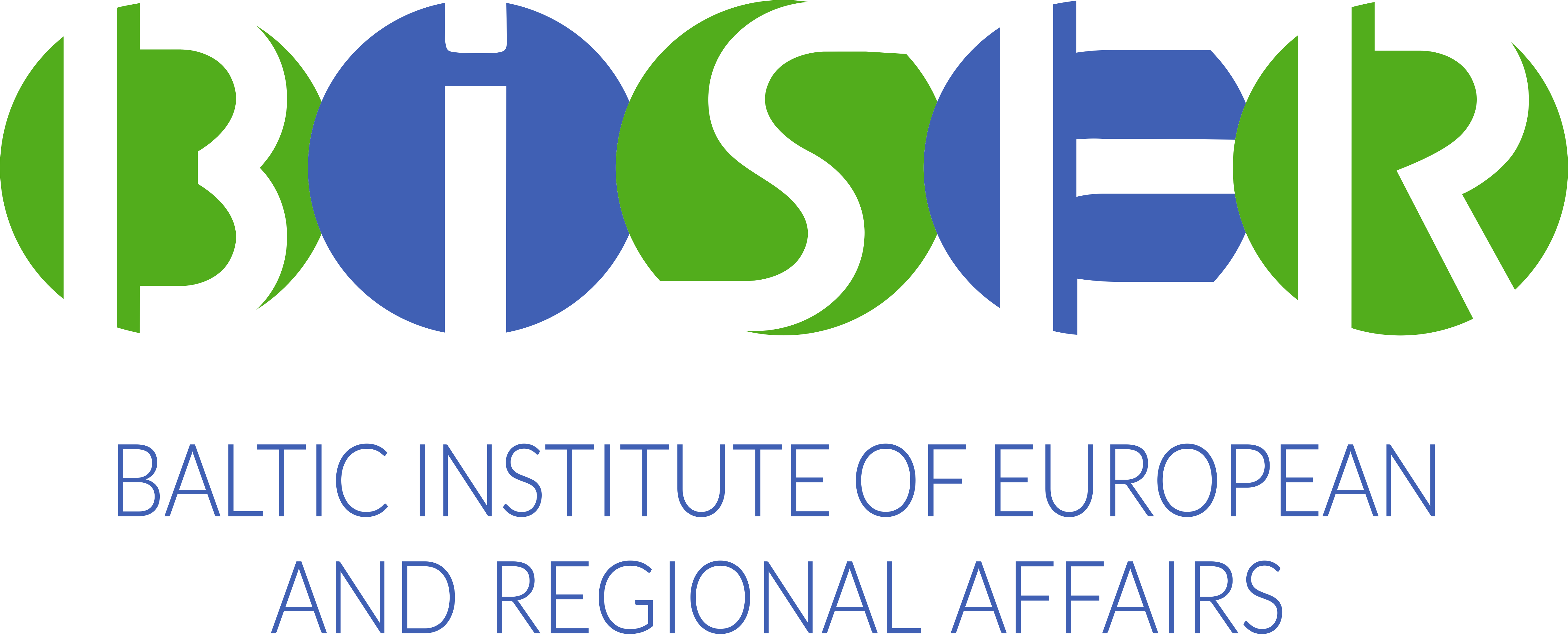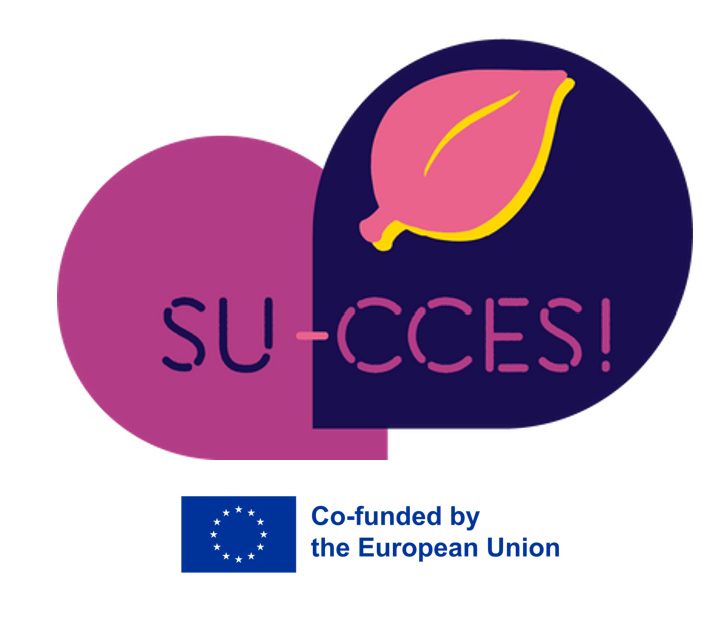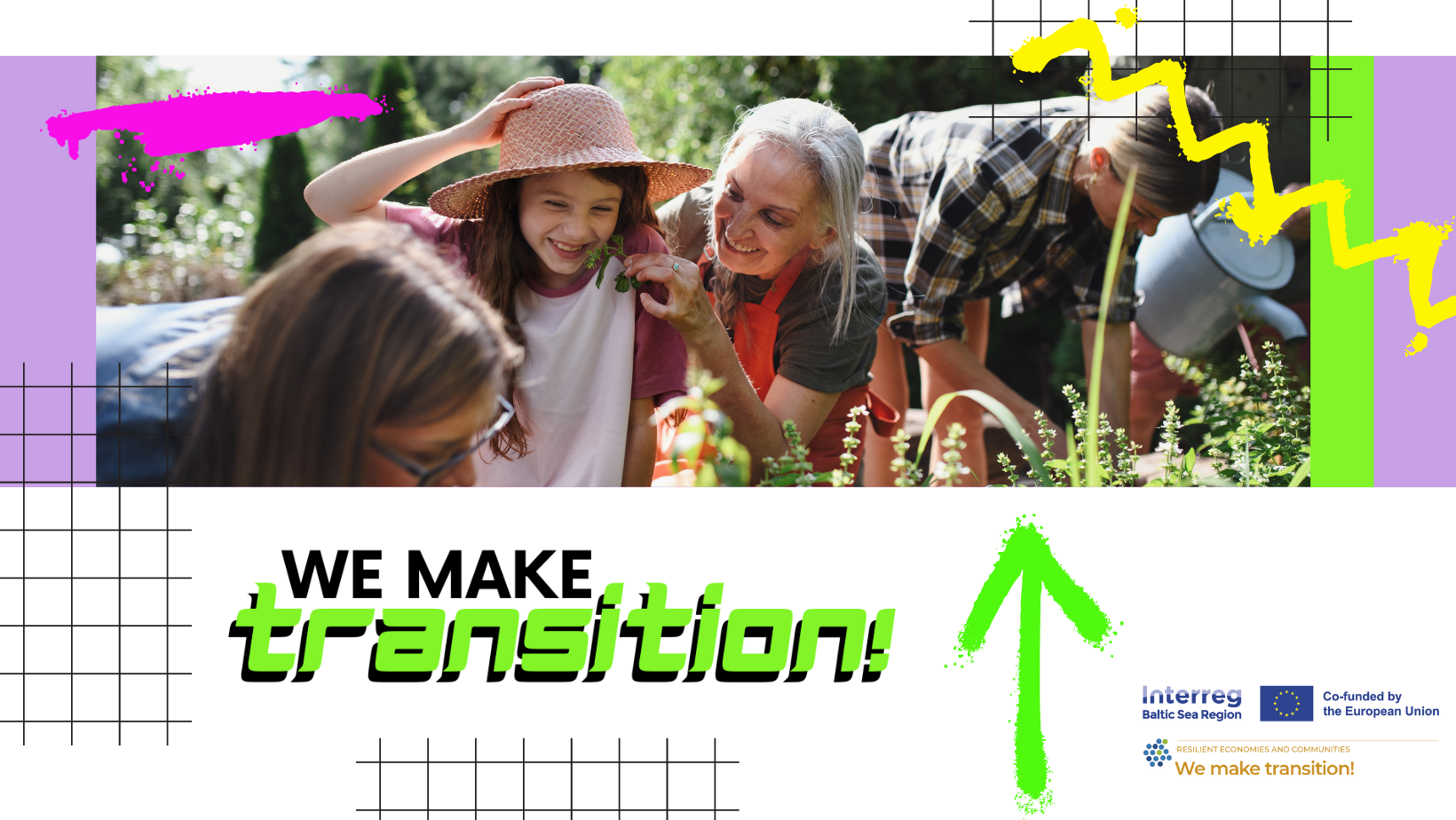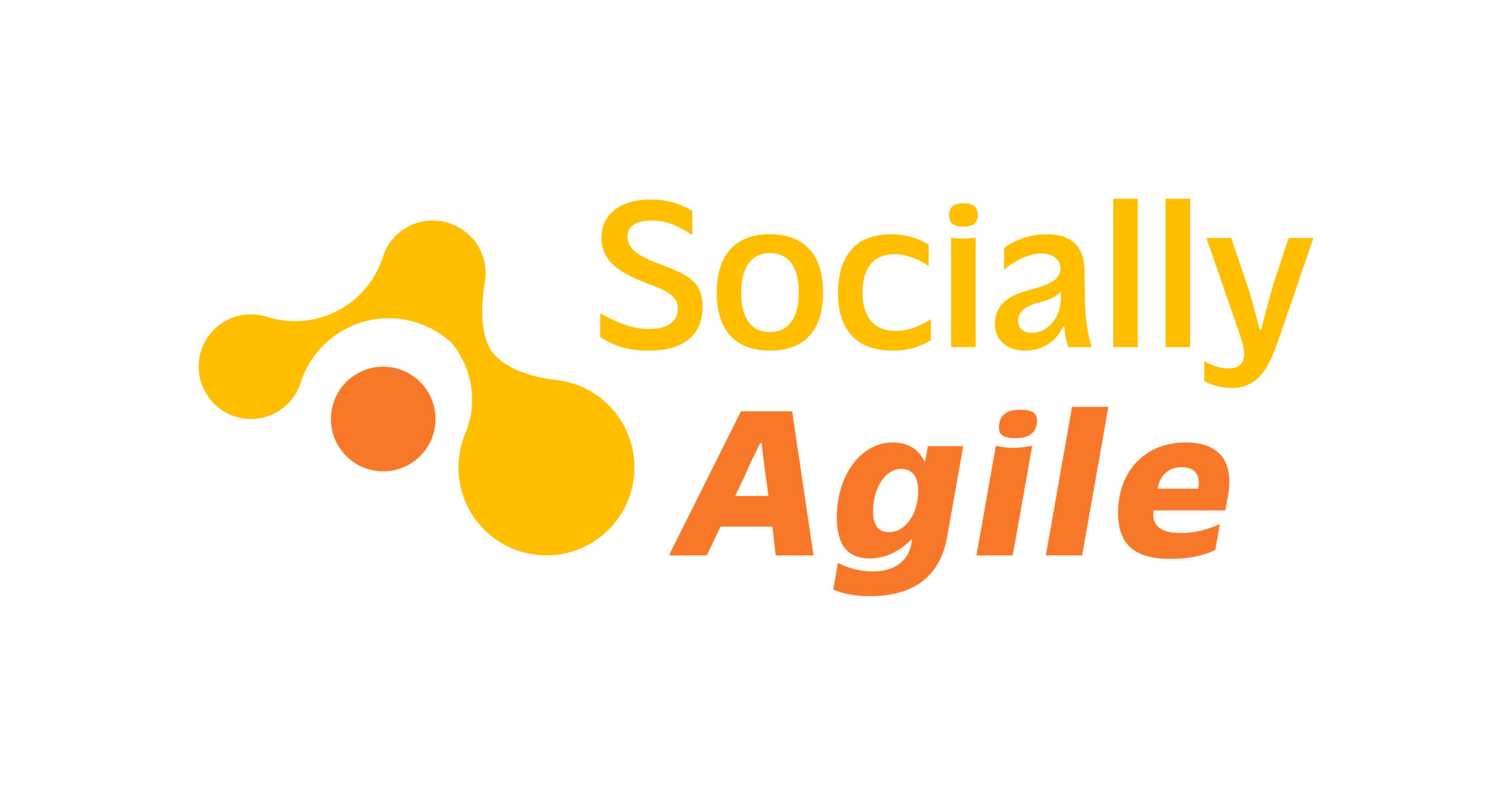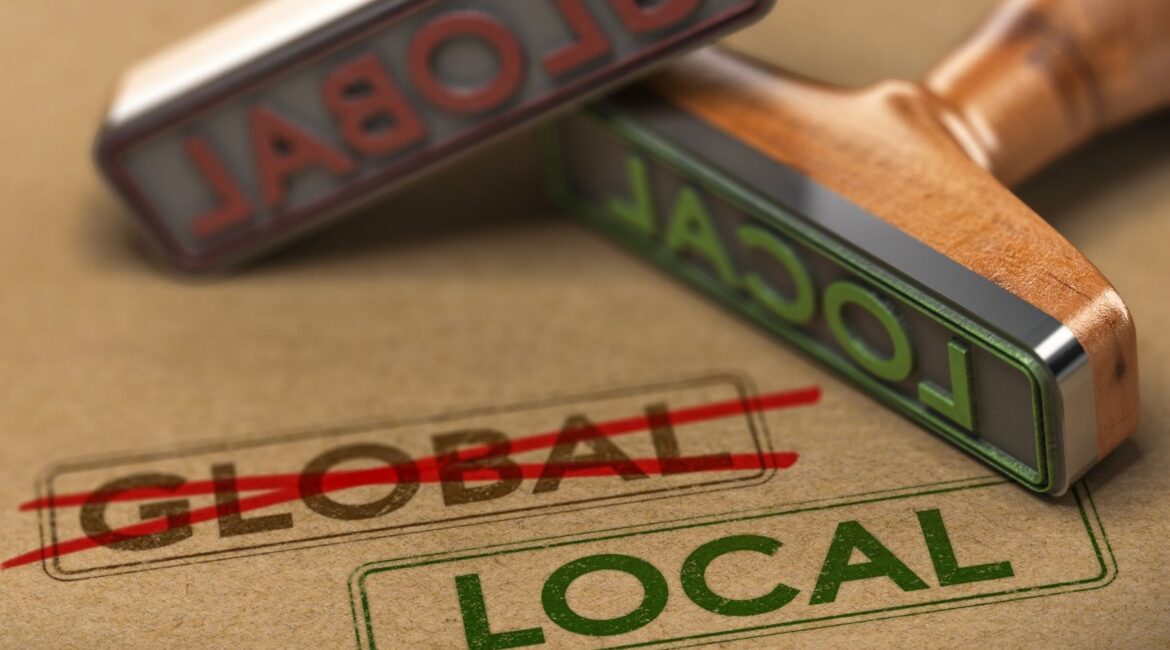Participatory Budgeting (PB) is a process of participation in which citizens are directly involved in decision-making about budget allocations of their local government or district. It was first implemented in the 1980s in Porto Alegre/Brazil in particular to increase transparency about the budget allocations and to cope with social inequalities and corruption. Since then, the concept of PB has been spread all around the globe and it became a success story in terms of public sector management innovations. Due to different starting conditions in each local government implementing PB, legal requirements but also out of experiences with respect to successful PB processes, the original Port Alegre PB model has been adjusted several times. This even starts with the fact that there is no universal definition of PB.

Since “there is no ‘one size fits all approach”, each local government, which is willing to implement its own process, needs to consider different design possibilities and to make its own decisions about how to design its own PB process. This, however, requires the implementers of local governments to collect plenty of information and to start “from scratch” with their process.

In order to bundle capacities of municipalities in PB design and implementation, EmPaci project partners have developed a “PB Type Groups” document aimed at supporting implementers new to the field of PB in setting up their PB process. It reflects on factors for PB success from the perspective of citizens, the municipalities and also the PB process. The objective of this document is to give decision guidance on how the PB process can be designed based on specific preconditions of each local government.
The content of this document is compiled from different sources. On the one hand, academic and practitioner literature (see list of references) has been reviewed to identify existing categorizations of PB. Interviews with representatives of 12 German municipalities with a long-standing PB tradition or discontinued PB and citizen survey in 18 districts or municipalities in 6 BSR countries have been conducted to identify municipalities’ and citizen needs for PB.
Data from more than 20 000 citizens were collected and insights were reflected in the document.
‘Ideal types’ of PB
One of the most specific and known PB classification approaches is based on Sintomer et al. (2012). Their six types are differentiated by the level of deliberation, type of actors and the power that is given to the citizens.
The so-called ‘ideal types’ are:
Participatory Democracy
At the beginning at this level, the citizens elect delegates to the special counsel. This council sets the rules for the upcoming budget. The next step is to discuss investment projects and to create a list of projects. At the next district and city level, the delegates rank the proposals. The final list constitutes a participatory budget draft. The municipal council includes this into the municipality budget. The citizens have a de-facto PB power in the decision making because the council must approve the draft. After that, a monitoring body (consisting of delegates from the districts/city) is formed.
The implementation of this type is not possible everywhere. It is a description of an ideal type but the categorization does not give advice to what type of municipality it fits based on recurring factors and which actions might be useful. If country-specific legal restrictions prevent this type, then it cannot be implemented. Nonetheless, there may be a way to integrate certain process elements (like the board of citizens). Still, if there are no legal restrictions, but the political engagement of the citizens is not high enough, the type does not fit the population. These potential problems for practical users are not addressed in this model.
Community-Development
What separates this type from the other five ideal types of PB is the project implementation by local communities rather than by civil servants. A board of citizens and NGO members supervises the implementation. It is independent of the municipal council to a higher degree. So, there are as many bottom-up as top-down dynamics. The influence of local politics and institutional bodies in the decision making is clearly limited and distinguishes this model from the Participatory Democracy. Deliberation is possible to a higher level. Often NGOs are involved in organizing the activities of an independent board. The success of this type is clearly linked to these NGOs, e.g. their ability to reach marginalized people and disadvantaged groups. This model stands for the chance of new process structures and influence on community activities besides the conventional ways via political party membership or local elections.
To reach this, bottom-up and top-down activities are needed. This calls for a high level of citizen engagement and a willingness to share power by the local government. This general description of the type cannot provide instructions to set up a working board, that is capable of acting.
Proximity Democracy and Participatory Modernization
In contrast to the Porto Alegre in Europe-type, these two types are consultative. All decisions are made by the municipal council. The listening takes place via citizens’ assemblies and in forums. In the latter, participants are being invited through media, by mail or by personal invitation.
The proximity-participation model involves districts as well as the whole city with the deliberation on investments in the former case and on general strategic goals in the latter. However, the citizens have neither influence on the proposal ranking nor the decision-making. The municipal council dictates the process, its representatives lead the forums and decide in the end.
Participatory Modernization is all about increasing transparency (referred to as: consultation on public finance). Information is spread by brochures, the internet and media reports. Additionally, citizens’ forums are held for randomly selected and interested citizens.
Two versions are possible getting input on public services and ideas for rebalancing:
1. In the first version of the model the focus is on services delivered by public providers (e.g., kindergartens, public swimming pools and street cleaning). Information is presented to citizens and special forms for suggestions by the citizens are provided.
2. The second version is about proposals to rebalance the budget (reducing public expenditure, increasing taxes). The citizens are encouraged to come up with their own suggestions to save or raise resources. Ideas could be gathered via questionnaires and then be quantified. The local council announces its decisions after internal deliberation. Again, the municipal council controls the process and ultimately decides.
For practical users, this type gives some idea to structure the PB and what could be requested from the citizens. They fit especially for a low level of participation and mobilization of citizens. But it would be interesting to know e.g. what is possible in the PB process to foster participation and in which interval the meetings take place.
Neocorporatism and Multi-stakeholder Participation
Regarding Neocorporatisms and Multi-stakeholder Participation, both models target organized groups to co-decide on potential investments in social, cultural and environmental areas. Both models differ from the other types by including funds from outside the municipality. Resources can be provided by international organisations like the World Bank, NGOs, private companies or the national government. The stakeholders receive decision power from a board or committee. This body of representatives of NGOs and/or agents of private sector entities and local authorities take the decision collectively based on the proposals (co-governing partnership).
These models focus on financial external resources, which could be interesting for certain municipalities, that have not thought about it. But it is questionable how to set up a frame for co-governing and how the power is distributed and how the long-term interests of the community are safeguarded.
References:
Sintomer/Herzberg/Allegretti/Röcke (2012): „Participatory Budgeting Worldwide“ URL: https://www.buergerhaushalt.org/sites/default/files/downloads/LearningfromtheSouth-ParticipatoryBudgetingWorldwide-Study_0.pdf
Krenjova/Raudla (2013): “Participatory Budgeting at the Local Level: Challenges and Opportunities for New Democracies.”, Halduskultuur – Administrative Culture 14 (1), pp. 18-46.
The full document can be found here.
